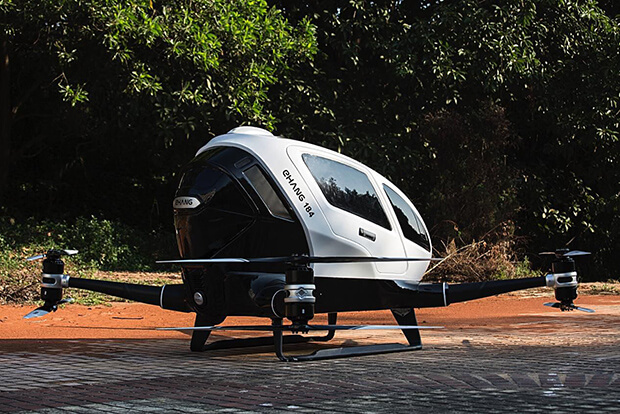Will 2017 be the Breakthrough Year For Flying Cars?
Will 2017 be the Breakthrough Year For Flying Cars?
Scott Wharton who is Vice President & General Manager of the video camera group Logitech has weighed in on the subject of flying cars.Ten years before the iPhone came out he predicted that every device with a screen would have a camera within a decade but he was wrong, not about the camera being on every device because that is what happened but he was wrong on the length of time it would take to implement such an innovation. The camera phone appeared just five years after his prediction.
Lately, Mr Wharton has been thinking a lot about another convergence, that of flying cars. This time it cannot be a prediction as flying cars are already here but many senior executives and multinational corporations around the world are contemplating a future with flying cars.
The age of personal hybrid ground-to-air vehicles is coming soon to an airspace near you.
Scott Wharton went on to say,
“I predict we’ll see people using these crafts within the next few years...I had predicted it would be five to 10 years. And then today, I came across two articles that suggest it’s much sooner than I expected.”I think people will look back to this moment and remember the mainstream saying: “It won’t happen for 20 years, or even in my lifetime.”
“One about a German company who expects to release flying taxis into market by 2019 and another that features a Slovakian company that unveiled its commercial design for a flying car at show in Monaco.”
Going on the exponential explosion of new technologies that we are seeing happening right now, the concept of flying cars is not all that unattainable.
Recent innovations are enabling development and innovations in new concepts that will soon see fruition in the next few years.
In the past decade, companies ranging from small operations to French aerospace giant Airbus have begun building flying car prototypes.
Some of the innovations at the moment include America’s Moller International, China’s EHang, the Netherlands’ PAL-V and Slovakia’s AeroMobil.
EHang has already partnered with Dubai to introduce flying cars later on this summer. Google’s co-founder, Larry Page, has formed one flying-car company and invested heavily in another.
Until just very recently, electric cars were a futuristic concept but now they are becoming more common and cost-effective, with their batteries getting lighter and cheaper.
The same development is envisioned for the flying car manufacturers. Its seems such a long way away but in hindsight, we will look back and be amazed at the rapid development and deployment of these new technologies.
Flying cars will also be electric and can appropriate the same technology that we see in the development of EV automotive transport.
Drone technology, which is a massive burgeoning technology is another transferable enabling technology which will aid in the development of flying cars.
An autonomous or even semi-autonomous flying car should even be safer than a piloted one if it removes opportunities for human error.
Just like most birds can walk and fly, flying cars should also be able to get you to a takeoff location via ground first, so the designation of flying car is apt with the car being the operative word.
In the future, we will have drone highways just the same way that we have road networks today. Autonomous and safe flying vehicles with inbuilt safety features in the event of a catastrophic failure of the systems.
At this point, we could not rule out the possibility in the future of anti-gravitic technologies being utilised for personal hybrid ground-to-air vehicles.
By thinking big, these new concepts and innovations will transform how we live. Flying cars could take transportation pressure off cities by allowing people to live vast distances from where they work. Pedestrians can take back their cities, pollution will be curtailed and major dividends for the human environment.
Wouldn’t it be fantastic to have a 10-minute flight in our morning commute than over an hour in bustling traffic on busy motorways?
This futuristic sci-fi world may not be far from reality but just as with many tech developments such as drone technology and electric and autonomous vehicles, flying cars may arrive in the global market before regulators are prepared for them.
This is the very reason why legislators and regulators need to develop the pathways for these new inevitabilities.
It took the Federal Aviation Administration in the United States more than a decade to develop rules for drones and even then they have adopted many of the regulations as to drone use from the Irish Aviation Authority who are taking the lead in drone regulation here in Ireland.
How the flying car will be inserted into everyday use is yet to be seen but one thing is for sure, the world is rapidly changing and these new technologies will arrive and possibly sooner than we think.


Author

Justin Kavanagh
Justin Kavanagh is a recognised leader
in automotive intelligence and vehicle
data supply to the entire motor industry.
He has almost 20 years experience in
building systems from the ground up.
As the Managing Director of Vehicle
Management System, he understands the
need and importance of trustworthy and
reliable vehicle history and advice to
both the trade and the public.
Follow me on LinkedIn